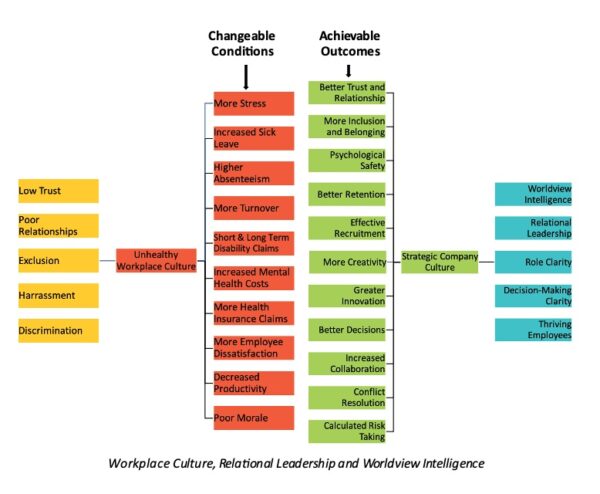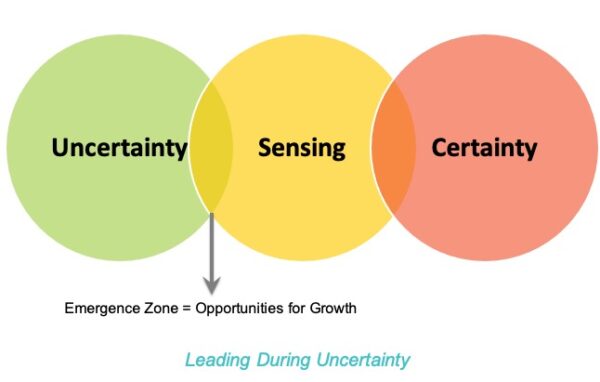Strategic Workplace Culture

The Appleton Greene Corporate Training Program (CTP) for Strategic Workplace Culture is provided by Ms. Jourdain & Mr. Nagel Certified Learning Provider (CLP). Program Specifications: Monthly cost USD$2,500.00; Monthly Workshops 6 hours; Monthly Support 4 hours; Program Duration 12 months; Program orders subject to ongoing availability.

Personal Profile
Ms. Jourdain, MBA and Mr. Nagel, MA, PhD
Ms. Jourdain and Mr. Nagel have extensive international consulting, training, leadership, executive and Board of Directors experience. They are the co-founders of a two-country consulting company, having created a proprietary system for consulting, learning and development, and facilitation, based in understanding how individual, team and organizational worldviews impact communication and business strategy. This innovative, thoughtful approach to understanding the impact of worldviews on how we each see and interact with the world around us has been well received in a variety of business and community environments, as a general practice and to advance specific issues.
Through direct application of worldview concepts in client settings, Mr. Nagel and Ms. Jourdain developed many planning models and frameworks to make it easy to work with the ideas and knowledge and to achieve results. These models and frameworks include the Worldview Intelligence Six Dimensions Framework, the CIDA-W Planning Model (Clarify, Illuminate, Design, Act, Worldview Leadership), the High-Performance Teams Model and the SHEER Conversational Planning Model (Stance, Hoped for Outcome, Empathy, Engage, Results/Reflection). They also draw on Systems Thinking and the knowledge from neuro- and behavioral sciences in supporting the implementation of programs and strategies they develop with and for their clients.
They are co-authors and co-creators of many resources including several books, resource guides, articles, and e-learning programs in addition to the in-person and virtual programs they deliver. They are called upon as keynote, conference and session speakers and thought leaders on their topics of expertise.
Mr. Nagel, MA, PhD
Mr. Nagel received his PhD in Social and Behavioral Science from Tilburg University, in the Netherlands, in 2015. His research and dissertation on worldviews forms a strong foundation for this current body of work, which is rooted in theory but grounded in a decade of practical application. Recognizing the profound impact of worldview explorations on the quality of conversations on issues that matter, he and Ms. Jourdain created specific applications for clients based on the nature of the issues to be solved.
Mr. Nagel has a BA and MA in Economics. He taught economics at the University of North Dakota and the University of Minnesota-Crookston. In addition, while at UMC he led several research initiatives bringing in over $5 million in research funds to the campus. He has several years of Executive experience including leading a Congressionally established Federal Commission, a multi-million dollar international trade research project and a Theory-U based multi-year initiative funded by several national and regional foundations.
Mr. Nagel has attended the Senior Executives in State and Local Government program at Harvard University as a Fannie Mae Foundation Fellow. He is a Donella Meadows Leadership Fellow. He has years of Board Director experience. He has served on the Boards and as the Chair of the Greater Minnesota Housing Corporation with assets now over $1B; Prairie Public Broadcasting, the statewide public television and radio system for North Dakota; the US-Canada Trade Alliance, an international trade promotion and policy organization; the North Dakota Consensus Council; and other Boards.
Ms. Jourdain, BA (Honours), MBA
Ms. Jourdain is an internationally recognized consultant, trainer and speaker with more than two decades of experience. Her practice is steeped in leading change, strategic planning, leadership development and building High-Performance Teams. When companies are looking to develop new strategies, resolve conflict, engage the hearts and minds of stakeholders, or for professional development, they call on her.
She is a mentor for women business owners through The Forum and is currently mentoring one-on-one and a group process for 8 women business owners. She was a driving force behind Envision Halifax (now Engage Nova Scotia): a voluntary organization whose mission was to ignite a culture of civic engagement. She co-designed and co-facilitated the leadership development program, as well as serving an instrumental role on the Steering Committee for 5 years. Her leadership was recognized in 2009 with an Award.
In her prior career as CEO of the Atlantic Division of a major health charity, Ms. Jourdain was the youngest leader across Canada. Working with the Board, she streamlined internal systems for finance, volunteer systems and service and advocacy support. As a recognized leader, she served on a number of local and national boards, in a variety of roles including executive positions. During her not-for-profit career, she was a member of the Canadian Society of Association Executives (C.S.A.E.), and was on both the local and national boards. Ms. Jourdain earned the designation of Certified Association Executive (C.A.E.). Her outstanding leadership and contribution in the not-for-profit sector were recognized with local and national awards. This included a scholarship to the Banff Management Center where she earned a certificate in Leading People and Organizational Change and then certificates in Strategic Planning and Change Management.
Ms. Jourdain and Mr. Nagel
Both Ms. Jourdain and Mr. Nagel are practitioners and global stewards of the Art of Hosting Conversations That Matter, otherwise known as The Art of Participatory Leadership, which is a self-organized international network of practitioners and trainers. They have been collaborating and partnering on consulting, training, learning and development work since 2011. They have worked together in the United States, Canada, Bermuda, France, Germany, Switzerland, Australia and Brazil.
Their work with clients and stakeholders includes community and cross-cultural engagement, strategic direction, innovation, addressing teams in conflict and building team coherence, in traditional organizations in the private, public and not for profit sectors, across systems in rural, urban and suburban settings, with social entrepreneurs, across generations and in culturally specific circumstances.
To request further information about Ms. Jourdain & Mr. Nagel through Appleton Greene, please Click Here.
(CLP) Programs
Appleton Greene corporate training programs are all process-driven. They are used as vehicles to implement tangible business processes within clients’ organizations, together with training, support and facilitation during the use of these processes. Corporate training programs are therefore implemented over a sustainable period of time, that is to say, between 1 year (incorporating 12 monthly workshops), and 4 years (incorporating 48 monthly workshops). Your program information guide will specify how long each program takes to complete. Each monthly workshop takes 6 hours to implement and can be undertaken either on the client’s premises, an Appleton Greene serviced office, or online via the internet. This enables clients to implement each part of their business process, before moving onto the next stage of the program and enables employees to plan their study time around their current work commitments. The result is far greater program benefit, over a more sustainable period of time and a significantly improved return on investment.
Appleton Greene uses standard and bespoke corporate training programs as vessels to transfer business process improvement knowledge into the heart of our clients’ organizations. Each individual program focuses upon the implementation of a specific business process, which enables clients to easily quantify their return on investment. There are hundreds of established Appleton Greene corporate training products now available to clients within customer services, e-business, finance, globalization, human resources, information technology, legal, management, marketing and production. It does not matter whether a client’s employees are located within one office, or an unlimited number of international offices, we can still bring them together to learn and implement specific business processes collectively. Our approach to global localization enables us to provide clients with a truly international service with that all important personal touch. Appleton Greene corporate training programs can be provided virtually or locally and they are all unique in that they individually focus upon a specific business function. All (CLP) programs are implemented over a sustainable period of time, usually between 1-4 years, incorporating 12-48 monthly workshops and professional support is consistently provided during this time by qualified learning providers and where appropriate, by Accredited Consultants.
Executive summary
Strategic Workplace Culture
Each of us sees, experiences and interprets the world around us in our own unique ways, including personally, professionally and socially. The same is true for teams, companies, organizations, communities and cultures. These worldviews, the lenses through which we see and experience the world around us, directly impact our relationships, communications, and productivity. They impact how company success is perceived, how mission, vision and goals are understood, and how leader and manager behaviors and actions are interpreted.
Worldviews can impact the workplace negatively, creating discord, poor performance, disengagement, conflict and even toxicity. Or, they can contribute to a positive, productive, high-performing and innovative workplace environment characterized by strong trust and relationships. Characteristics that contribute to negative or unhealthy workplace cultures are changeable conditions and characteristics of healthy or Strategic Workplace Cultures are achievable outcomes.
Negative worldviews set a baseline from which culture change can be designed and implemented. Positive worldviews set a baseline from which workplace culture can be strengthened and accelerated. A Strategic Workplace Culture Initiative, using Worldview Intelligence (a proprietary approach to Strategic Workplace Culture created by Ms. Jourdain and Mr. Nagel) and Relational Leadership frameworks, structures and methods, can shift the workplace from the negative to the positive or advance productive workplaces even further.
Organizations, divisions, departments and teams intending to thrive now and in the future are strategic about their workplace culture. Deloitte’s 2012 Core Beliefs and Culture Chairman’s Survey found that while executives and employees believe a distinct culture is important to success, there is often a disconnect between talking about having a Strategic Workplace Culture and creating and sustaining it. This has real costs for a company. Change is possible when the future vision for the company culture is clearly articulated and an assessment of the current state provides a baseline, both quantitative and qualitative, to identify gaps and ways to measure improvement and success. A Strategic Workplace Initiative addresses this.
Costs and Characteristics of Negative Workplace Cultures
Companies with low trust, challenged relationships, and even toxic workplace cultures, show a strong correlation with employee stress and financial costs to the company. These costs are related to sick leave and absenteeism, turnover, employee dissatisfaction, decreases in productivity, increases in health insurance claims, including short- and longer-term disability, and increased mental health costs.
Relationships in unhealthy workplace cultures are often strained and trust is lacking. People compete for time, resources and recognition, rather than collaborate with each other. Lack of alignment with company, division, department or team vision, mission and goals means achieving results takes longer and they can be compromised. These are changeable conditions.
Advantages and Characteristics of Strategic Workplace Culture
Workplaces with successful and inclusive cultures are strategic and intentional about it and explicit about their worldviews. Organizational goals are well defined and shared, with a plan to achieve them. Roles and responsibilities are clear. Everyone knows how their efforts contribute to the vision and goals. Stories that demonstrate how healthy the workplace is, and how exciting and rewarding it is to work there, are fostered and promoted. This is supported by business processes strategically embedded in the workplace that promote trust, relationship, learning, growth, self-esteem, safety, efficiency, productivity and accountability. These cultures can be enhanced and sustained through Worldview Intelligence and a Strategic Workplace Culture Initiative.
A Strategic Workplace Culture Initiative encompasses the worldviews, values, beliefs, patterns, traditions and attitudes expressed daily through management, workplace policies and employee behaviors. It defines what the company wants to accomplish and then outlines actions that are achievable, building accountability structures and integrating them into the rhythm of the workplace. A Strategic Workplace Culture then creates and sustains a healthy organization and team environment that is meaningful, purposeful and productive for those who work there. This makes working in such an organization unique and rewarding.
In most organizations, company and team culture forms organically rather than intentionally. It often carries forward historical worldviews, patterns and even trauma within the company. This means that counter-productive behaviors and actions can take root and be amplified by the historical or current stories that people tell about their experiences with their managers, supervisors or direct reports, and of trust and relationship throughout the company. Being strategic about creating, sustaining or enhancing a positive, productive workplace culture means inspiring those stories in ways that highlight the value of working in this kind of company. The same idea applies to any organization, division, department or team that wants to be intentional about measuring and improving its culture and the experience of the people who work there, whether the current state is already positive, somewhat neutral or problematic.
Engagement of employees, and internal and external stakeholders, is a characteristic of a Strategic Workplace Culture. Processes are in place that ensure this happens in authentic and meaningful ways. A Towers Perrin 2012 Global Workforce Study found that, around the world, 26% of employees were disengaged, 17% were detached, 22% were unsupported and only 35% were highly engaged. This program provides strategies and business processes for companies to create environments where employees are highly engaged and motivated to go to work every day.
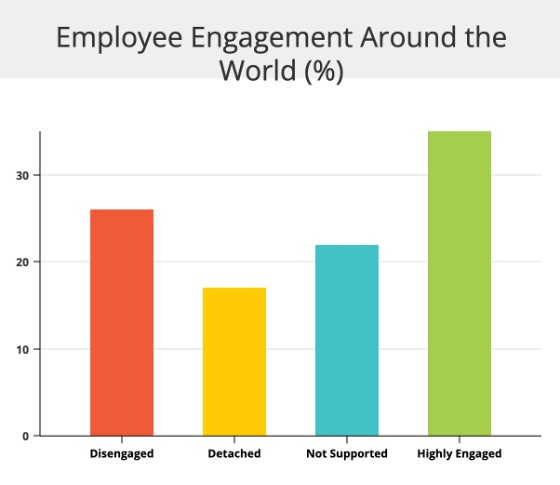
Worldviews and Worldview Intelligence
Worldviews are the lenses through which we see and experience the world. Each of us has one. In fact, we each have more than one. Our worldviews operate primarily in our unawareness and directly impact, within milli-seconds, how we interpret and interact with the world, events, situations and other people. Worldviews influence relationships, communication, conflict or tension, decision-making and team, department, division and company cultures and whether we realize it or not.
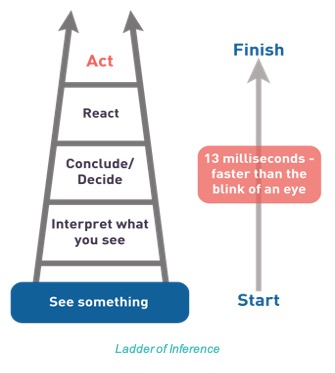
An individual, team, department, division or company that becomes Worldview Intelligent offers greater leadership potential, more inclusive, welcoming workplaces and the creativity that arises from the interaction of multiple worldviews. It offers alternative ways and skills to address conflict and tension. A Strategic Workplace Culture Initiative builds a shared worldview where team success and individual success are related and rewarded. This leads to innovative ideas or solutions to challenges or opportunities, healthier teams, greater workforce engagement and productivity, and an intentional, Strategic Workplace Culture.
Worldviews, Identity and Worldview Clashes
Worldviews are closely associated with our sense of personal, professional and company identity. Psychological research indicates that when we perceive a challenge to that identity, we respond as if our life has been threatened. This means we can have exaggerated responses to worldview challenges or clashes, without knowing why, resulting in poor decision-making or unnecessary conflicts. Most people have not had the training or experience to build the skills to work constructively with conflicts or worldview challenges. This lack of knowledge and skills, the inability to address conflict, is disruptive to teams and work environments across the spectrum of workplace cultures.
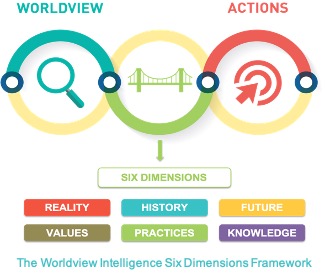
Understanding individual, team, department, division and company worldviews by making them visible, provides new knowledge, language and approaches to work with and through conflict or worldview clashes in healthy, constructive ways. The Worldview Intelligence Six Dimensions Framework offers a structured, consistent way to understand and discuss worldviews and differences in perspectives. It also provides a mechanism to align worldviews across a company.
Strategic Workplace Culture – The Worldview Intelligence Approach
Worldview Intelligence is the ability to skilfully give voice, visibility and understanding to a multiple of worldviews in order to make connections, bridge differences and open explorations on issues that matter, while maintaining compassion and humility. It is comprised of a set of patterns, practices and frameworks that, when applied individually or collectively, offers ways to surface the assumptions, beliefs, value systems and worldviews of individuals, teams, departments and companies. All of these components impact trust, relationships and performance.
Worldview Intelligence provides constructive ways to illuminate and discuss worldviews, assumptions, beliefs and value systems through self and team reflection and curiosity, rather than in adversarial or defensive ways. The Worldview Intelligence Approach provides the potential for better, more informed decision-making and more comprehensive approaches and solutions to emerge on a range of issues. It builds the skills that enable people and teams to address challenges that might be mildly oppositional to completely divisive to seemingly unsolvable. This is a contributing factor to a successful Strategic Workplace Initiative and to Strategic Workplace Cultures.
Workplace culture is a shared or collective worldview, as are team and department cultures. Strategic culture is shaped by leadership; explicit worldviews; workplace policies and practices; people, mission, vision and values; trust and relationship; communication and accountability. Intentional and inclusive company culture is defined by relational leadership; role, goal and decision-making clarity; effective, cohesive teams; the opportunity and encouragement to safely speak up and challenge the status quo; the ability to address conflict in healthy, constructive ways; the stories told by the people who work there; and where leaders and employees are held accountable for living the core values of the organization. An organization with these Strategic Workplace Culture elements at its core will be a high-performing company.
Engaging, Healthy Company and Team Cultures is Where People Want to Work
Dedicated, productive employees are drawn to work in organizations where they feel valued, where their voice and opinions matter, they have authentic opportunities to provide input into decisions that directly affect their work and they have the opportunity to fulfill personally meaningful goals and values. This requires self-confident, worldview aware executives, directors, managers and supervisors who lead with care, consideration and respect, which results in better individual and team performance. It requires trust of and in supervisors and senior management and where people receive recognition, praise and rewards for work well done and work goals achieved. This is best accomplished through worldview awareness, Worldview Intelligence and Relational Leadership, which emphasizes the development of positive, productive relationships throughout the company, built on a foundation of trust, learning and growth, in support of achieving company and team goals and outcomes.
The Role and Impact of Psychological Safety, Inclusion and Belonging
Strategic Workplace Cultures are psychologically safe. This involves creating the conditions where people can take chances without fear of being embarrassed, marginalized or punished in some way. Sufficient shared protection exists, enabling people to speak up and take risks, including the ability to ask questions of leaders, managers or supervisors. When a workplace is psychologically safe, the people who work there feel included, everyone learns, contributes fully and has permission to challenge the status quo, even if it creates disagreements or conflict, knowing that conflicts will be resolved respectfully and safely.
For inclusion to be a core value and a practice in organizations, psychological safety is imperative. Worldview Intelligence models, frameworks and practices provide a foundation from which psychologically safe environments can be created and sustained, where people thrive every day.
The Role of the Brain and Neuroscience
Psychological safety is not just about emotional reactions. From neuroscience research we know that there are also physiological impacts of feeling included or excluded. The brain is constantly emitting neurochemicals, which are essentially molecules, in response to experiences in the environment. These neurochemicals can induce a feeling of pain or discomfort, a feeling of comfort or pleasure, or be neutral. Understanding how the brain and neurochemicals work contributes to the ability to create a Strategic Workplace Culture.
When people feel excluded, the part of the brain associated with pain is activated. People experience physical discomfort and actual pain. Susceptibility to depression and PTSD increases. Working in a real or perceived unsafe environment lowers work performance and can temporarily decrease an individual’s IQ. It is possible, simply through lack of awareness, to unintentionally create conditions of exclusion. These are changeable conditions.
When people feel included, the part of the brain associated with rewards is activated. The brain has an increased ability to regulate stress. Self-esteem is increased and work performance improves. A person’s overall sense of social well-being also improves. This contributes to feeling good about the workplace, trust and relationships and being more motivated and more productive. These are achievable or expandable conditions.
This program provides foundational knowledge regarding neuroscience that can be included in a Strategic Workplace Culture Initiative, leading to constructive, positive changes, or enhancements to already strong workplace cultures, that result in better decision-making and outcomes in any situation.
Behavioral Science Concepts
In addition to the knowledge from neuroscience that supports creating a Strategic Workplace Culture, greater understanding of individual and group dynamics has been gained through the research being done in Behavioral Science. Knowledge of typical patterns of individual and group behavioral dynamics leads to more effective communication, people strategies, healthier team behaviors and workplace cultures.
While knowledge of neuroscience helps us understand the role of the brain in influencing behaviors, an awareness of learnings from human behavioral research further deepens our understanding of why people respond to workplace situations the way they do and how these reactions, behaviors and concerns can effectively be addressed when implementing a Strategic Workplace Culture Initiative.
Key examples of behaviors that will show up in the workplace include naïve bias, loss aversion, confirmation bias and motivated reasoning, sunk cost, anchoring bias and cognitive dissonance. Each of these unconscious patterns of behavior can manifest among individuals and teams within the workplace. Understanding them and making them visible can diffuse tensions, normalize certain behaviors so that people don’t feel they are doing something wrong, and help leaders develop strategies for attending to them, both individually and within teams.
The Business Process
This program will provide participants with the knowledge and skills to successfully implement a Strategic Workplace Culture Initiative. It will also provide the skills to maintain and adapt, as circumstances change, an ongoing Strategic Workplace Culture.
The program provides systems, processes and procedures that include an instrument to assess, address and shape workplace culture; leadership, team and employee performance; health and well-being; to ensure your company culture is intentional and strategic.
This results-oriented program is highly interactive, combining teaching, exercises, personal reflection, small group conversations, and whole group debriefs. It also identifies actions participants can take following each Workshop that can advance their work implementing a Strategic Workplace Culture.
Curriculum
Strategic Workplace Culture – Part 1- Year 1
- Part 1 Month 1 Strategic Workplace Culture
- Part 1 Month 2 Know Thyself
- Part 1 Month 3 Worldview Leadership
- Part 1 Month 4 1 + 1 = 3
- Part 1 Month 5 Getting Work Done
- Part 1 Month 6 Informative Neuroscience
- Part 1 Month 7 Shifting Patterns
- Part 1 Month 8 Worldview Intelligence Planning
- Part 1 Month 9 Addressing Uncertainty
- Part 1 Month 10 Engaging Everyone
- Part 1 Month 11 The Outside
- Part 1 Month 12 Coming Full Circle
Program Objectives
The following list represents the Key Program Objectives (KPO) for the Appleton Greene Strategic Workplace Culture corporate training program.
Strategic Workplace Culture – Part 1- Year 1
- Part 1 Month 1 Strategic Workplace Culture – Workshop 1 sets the stage for the entire program. It includes defining key terminology, identifying individual participant perspectives or concerns regarding the workplace, creating an initial vision for the Strategic Workforce Culture Initiative and establishing baseline measurements for current workplace and team culture from which to track progress. Among other things, baseline measures could include the rates of turnover, recruitment, absenteeism and sick leave and the associated costs. This information contributes to a business case for why a Strategic Workplace Culture will bring value to your workplace and your organization. Worldview Intelligence, Worldview Leadership and Strategic Workplace Culture are defined and illustrated, with models, frameworks, characteristics, patterns and practices. The intersections between them is explored. The importance of trust and relationship and how to build them is established. Knowledge of worldviews helps people be better leaders. This is demonstrated in this Workshop and throughout the whole program. The Worldview Intelligence CIDA-W Planning Model is introduced and its application to the program described. CIDA-W stands for Clarify, Illuminate, Design, Act and Worldview Leadership. The Model provides a learning and planning structure for the entire program, with application for the workplace, including worldview awareness, culture change, innovation and dealing with uncertainty and conflict, beginning in this Workshop, with Clarify. Basic concepts from Neuro- and Behavioral Science are introduced that support self-knowledge or awareness and the understanding of normal, typical human dynamics. These concepts are built on and expanded throughout the program. A draft of the vision for Strategic Workplace Culture will be started by the program participants and further developed prior to attending Workshop 2. This draft will contain specific, identifiable and visible outcomes to be accomplished by the end of the program. Participants will seek input or feedback into this vision from those they work with or who will be impacted by the Strategic Workplace Culture Initiative. A pledge of support by each participant for creating a Strategic Workplace Culture will be signed. The initial Workplace Culture assessment will be introduced and discussed by participants in the Workshop and between Workshops 1 and 2. Decisions will be made about the data to be collected to establish the baselines from which progress will be tracked. Collection of the data for these measures will begin between Workshops 1 and 2.
- Part 1 Month 2 Know Thyself – Self-awareness, knowledge and growth is central to Worldview Leadership. The Worldview Intelligence Six Dimensions Framework creates the opportunity to learn about and understand personal and professional worldviews. The Framework provides a structure for exploration, training and understanding and it is an analytical Framework. Participants will gain an understanding of the Framework, each of the individual Six Dimensions (reality, history, future, values, practices, knowledge), their impacts and how they also operate interdependently. This offers the opportunity to be more aware of the worldviews of self and others, to reflect on their impact on trust, relationships and communications and to work with this awareness to build a Strategic Workplace Culture. The Six Dimensions of the Framework are introduced, described with examples, and the relevance of each to communication, interactions, individual growth and awareness. The Dimensions contribution to conflicts that individuals and teams experience is made clear. From CIDA-W, both Clarify and Illuminate are drawn upon as participants explore their own worldviews and learn how to apply this to understanding personal, team, and organizational worldviews and interactions. The Framework includes questions crafted for exploring each dimension in differing contexts. Between Workshop 2 and 3, participants will use the Framework to reflect on other worldviews, which could include another person, their team, department, division or organization overall and then test the assumptions they have made about worldviews within the organization, being prepared to report on their discoveries in the next Workshop, discussing the relevance of these discoveries to the design of their Strategic Workplace Culture.
- Part 1 Month 3 Worldview Leadership – Leadership is an essential element of a Strategic Workplace Culture. Worldview Leadership emphasizes the development of positive, productive relationships, built on a foundation of trust, learning and growth, in support of achieving company and team goals and outcomes. The importance of transparency and communication in building trust and relationship is emphasized. Initial results from the Workplace Culture Assessment will be used to assess trust. An analysis will be done to identify the gaps to be addressed with discussion of the strategies to do so. This Workshop draws on Illuminate from CIDA-W: illuminating historical patterns of leadership and decision-making, current leadership patterns and how relationship and trust is experienced in the workplace. An organization can promote a culture of Worldview Leadership throughout the entire organization. To do so, Myths of Leadership need to be addressed. These myths center around the age-old question of whether leaders are born or created, and what various leadership styles mean, including authoritarian, directive, visionary and collaborative. This Workshop explores when and how different styles of leadership need to be employed. Worldview Leaders engage early and effectively with others inside and outside of the workplace. Engagement is a key characteristic of a Strategic Workplace Culture. It ensures the culture is more inclusive, creates a sense of belonging, invites everyone’s participation, welcomes questions and is psychologically safe. This contributes to better decisions, more creative solutions to challenges and opportunities and greater innovation where needed. A challenge in workplace environments often arises as a result of how decisions are made and the expectations employees carry regarding consultation. Messages about decision-making are often communicated unintentionally. Not everyone needs to be included in every decision. An expectation that this is the case is often a symptom of deeper underlying communication, relationship or trust issues. Decision-making models will be explored to ensure participants understand the importance and value of decision-making clarity, when to use different decision-making processes and how to ensure everyone understands what kind of decision is being made, why and by whom. Prior to Workshop 4, participants will incorporate what is learned in this Workshop into a “My Leadership Story” which describes their own leadership journey, past, present and their expectations or hopes for their future Worldview Leadership approaches and experiences.
- Part 1 Month 4 1 + 1 = 3 – This Workshop introduces the Worldview Intelligence High-Performance Teams Model. The model identifies the components of team performance that require attention – work, relationship and learning – and what happens when one part of the model is neglected, as well as what happens when the Model is used to inform team dynamics, agendas and meetings. Every member of a workforce or team has unique life and lived experiences they bring to their personal and professional worldviews. For Worldview Leaders, helping the members of their division, department or team become aware of each other’s worldviews and how they were formed creates opportunities for exploration and connection while contributing to trust building. A Strategic Workplace Culture means people know how to invite and engage difference and how to work with uncertainty or conflict in ways that benefit rather than detract from the health and wellbeing of the team and the work they are engaged in. Recognizing the diversity of experiences, worldviews and perspectives is an asset in building team cohesion, trust, relationship and understanding. This knowledge allows for bringing these assets together to optimize team performance and ensure the team, department or division’s performance is more than the sum of its individual parts. Participants will be asked to reflect on teams they are part of, including, if they choose, the team taking this course, through the use of a team assessment instrument. These assessments have proven valuable in provoking conversations amongst team members about their goals, dynamics and performance. The team will look at how inclusive and collaborative they are as a team and as a workplace and what practices they have or need to support a Strategic Team or Workplace Culture. These conversations create the opportunity to align worldviews about the team, department or division with the team and company vision and strategies. This Workshop draws on all components of the CIDA-W Planning Model. Following completion of this Workshop, participants will be asked to identify current or potential team practices that support the health and well-being of all members and the team as a whole. They will also identify workplace teams they can introduce to the High-Performance Teams Model and assessment between Workshop 4 and 5, prepared to report back on the results during the next Workshop.
- Part 1 Month 5 Getting Work Done – A main point of creating a Strategic Workplace Culture is to nurture and sustain healthy people dynamics so that work gets done, goals or outcomes are achieved and the company reaches or exceeds its targets. This requires consistent practices for a variety of meetings, communications, and engagement, including team, department, executive and stakeholder. This Workshop draws on all elements of the CIDA-W Planning Model. It provides processes and practices to improve the effectiveness of meetings and other interactions, building on the High-Performance Teams Model. It can begin as simply as, does everyone know why they are in the room for their usual meetings? Do the meetings feel like they have accomplished something important to the work of the team? Are topics rehashed because they have not been properly discussed the first time around? There are meeting practices and processes that contribute to more productive team cultures and continue to move teams toward their identified outcomes. The Diamond of Participation Framework will be introduced. It is both a meeting planning process and a framework for understanding team or group dynamics. Participants will work with this framework in considering meeting planning and in discussing dynamics that show up at each phase – divergence-emergence-convergence and the groan zone. The characteristics of each phase are described, why each is important to good planning and effective meetings is highlighted and strategies to move with and through them are identified. Meeting planning can also include the elements of the High-Performance Teams Model. Additionally, a meeting evaluation template will be offered to review and reflect on the effectiveness of meetings including how they are run and the outcomes. Participants will be asked to develop a meeting planning and structure format or process they can use to have more effective meetings and support a Strategic Workplace Culture. The planning structure developed can be built upon the ideas presented in this Workshop. Between this Workshop and the next, participants will apply the meeting design and be prepared to report back on the outcomes.
- Part 1 Month 6 Informative Neuroscience – There is so much that is just becoming known about the brain. The more we learn from neuroscience and behavioral science, the better informed we become about how to break old patterns and create and sustain new ones that support a Strategic Workplace Culture. This Workshop is very much about Illuminating patterns and behaviors and identifying how they contribute to group dynamics. The brain influences our perspectives, behaviors and worldviews. Understanding neuroscience and behavioral science informs what we know about human dynamics and offers insights into strategies to be better Worldview Leaders. One element of this is the ability to better understand and have empathy amongst team members to develop greater team cohesiveness. Understanding the neuroscience of inclusion, exclusion, change, and more, as well as predictable reactions to each of these, helps to create a change responsive and adaptive team, and a welcoming, inclusive and psychologically safe environment. These are all characteristics of a Strategic Workplace Culture. Neurochemicals constantly emitted by the brain influence reactions to things that happen in the environment or to us, making reactions not just emotional but physiological as well. Neurochemicals are essentially molecules, emitted in response to real and perceived experiences we encounter. These neurochemicals can induce a feeling of pain or discomfort; a feeling of comfort or pleasure; or be neutral. Neurochemicals are in play when people feel excluded or included, affecting behavior and interactions. Additionally, there are numerous concepts from Behavioral Science research that point to common human and group dynamics. These concepts demonstrate why change is hard, why we become attached to our worldviews and perspectives, why conflicts and worldview clashes occur and why arguing doesn’t usually work to change someone’s mind when they deeply hold an idea. We also know the brain likes novelty, can hold a growth mindset and can be trained for new behaviors. Understanding this, strategies can be created to inform and influence healthy individual, group and team dynamics. Awareness of how the brain and neurochemicals work, and understanding Behavioral Science concepts and how to work with them, contributes to the ability to create a Strategic Workplace Culture.
Participants will be asked to identify inclusionary practices that exist in their organization and how they can expand on them. They will also identify exclusionary practices, the behaviors that contribute to them and what can be done to mitigate or eliminate exclusionary behaviors. Between this Workshop and the next, participants will identify various of these concepts as they show up in meetings or conversations and work with strategies that invite exploration and allow work to progress with greater ease.
- Part 1 Month 7 Shifting Patterns – Common complaints in organizations, no matter their size, are: “we work in silos”, “we don’t really know what other teams or departments do”, “they don’t understand how we work”, and “we don’t communicate well”. Like individuals and teams, departments, divisions and companies all have worldviews. These worldviews can compete with each other and they can clash. They can also support each other. Awareness of worldviews, clarifying and illuminating their impact, strengthens a team’s contribution to their departments or divisions and to the company overall. Making worldviews visible can bridge information and communication gaps that exist. Worldview Intelligence helps departments make connections with each other, open explorations and build bridges to break down silos and draw on each other’s strengths. Competing worldviews can be aligned to work and move in the same direction, toward the vision articulated about workplace culture and aligned with company goals. The stories shared within the organization and externally say a lot about workplace culture, which impacts performance, recruitment and retention. Worldview Intelligence can help shape, influence and inspire the stories people focus on that make their company a desired place to work. The results of the Workplace Culture Assessment done previously in this program will be reviewed. This creates the opportunity to further discuss the results and identify steps for improvement. Creating a workplace culture that invites and works with multiple worldviews is strategic. Participants will be invited to reflect on the Power of Story, explore the components of storytelling, through an appreciative lens of what works well, and begin to compose their own stories of their experiences with workplace culture that align with the vision that was defined in Workshop 1. This will be started within the Workshop and further refined and expanded between this Workshop and the next.
- Part 1 Month 8 Worldview Intelligence Planning – Participants have already been introduced to the Worldview Intelligence CIDA-W Planning Model and have been using elements of it in each Workshop. By now they will have discovered it is not necessarily a linear process, but iterative. This Workshop provides an extensive understanding of and experience with the Model and how it can apply to any initiative undertaken in the workplace. How worldviews, Worldview Intelligence and the Six Dimensions Framework can be integrated into the Planning Model will be demonstrated through examples, planning exercises and a review of current initiatives participants are working on or past examples within the company. Additionally, we have a tendency to respond to or plan for surface level, observable events without taking the time to explore underlying causes of these events. The Iceberg of Systems Change will be introduced in this Workshop. The Iceberg provides a structure for inquiring about the deeper level patterns and trends that need to be addressed for culture change to take root in a workplace and ensure that the Workplace Culture Initiative being designed is strategic. It addresses patterns, trends, behaviors and the mental models – past, present and future – that contribute to both unwanted or desired dynamics and outcomes. Worldview Leaders plan for stronger and more effective projects, initiatives or policy development and implementation. Working with the Iceberg and adopting the CIDA-W Planning Model: Clarify, Illuminate, Design, Act – Worldview Leadership, allows for planning to be more comprehensive. CIDA-W and the Iceberg can be used to analyze recent team, project or policy decisions to learn from those experiences. They can be applied to understanding Workplace Culture and what steps can be taken to strengthen an inclusive, psychologically safe work environment. Participants will expand the initial work done in previous Workshops using Clarify and Illuminate to more comprehensively Design an implementation plan for their Strategic Workplace Culture Initiative. And, participants will compare past workplace culture change initiatives, or lack thereof, with the elements of the Iceberg to see where the work landed or stopped and consider why the bottom of the iceberg wasn’t reached. This analysis and design will continue between Workshops.
- Part 1 Month 9 Addressing Uncertainty – Developing the ability to work with tension and conflict that can emerge when people feel uncertain about the future, their work or leadership is a key Worldview Leadership skill as well as a necessary component of a healthy and Strategic Workplace Culture. It is often easier for people to avoid conflict, not bring up a difficult topic or let things slide that really need to be dealt with. Things left unspoken and unaddressed create an undercurrent that contributes to uncertainty. Sometimes the response is to convey certainty, even as it is not there, instead of being in the perceived uncomfortable place of uncertainty. The language, skills and knowledge of Worldview Intelligence helps people sit with uncertainty and engage in discussions that shift from the personal to worldviews, from judgment of a situation or person to a discussion of ideas and strategies. This allows for healthy, necessary and candid team, department, division and company conversations. Research has shown that teams that address uncertainty and related conflict with respect and care outperform teams that move too quickly to decisions. In the Worldview Intelligence Leading Through Uncertainty Framework, there is a place between uncertainty and certainty where sensing takes place. Sensing can include pausing, reflecting, inquiry, curiosity and more research so that better, more informed decision-making can take place. Building on the understanding of neuro- and behavioral science introduced in Workshop 6, there will be specific application to understanding the brain’s desire for stability and familiarity. This can help recognize when uncertainty is being avoided and decisions are moving too quickly. It also helps understand the role that conflict and tension can play in sparking innovation and how working with this knowledge supports a healthy workplace environment. The Chaordic Path Model, developed by Dee Hock, founder of VISA, will be shared as a way to understand and work with uncertainty. While people like certainty, they also desire agency and need it to perform to their best results. Finding the right balance is essential to High-Performance Teams and a Strategic Workplace Culture. Additionally, role theory is introduced, where understanding typical, even archetypal, roles and behaviors enables us to separate out the value and contribution of the roles and behaviors that show up from the person who is exhibiting the behavior. The power of asking well-crafted questions as a way to address uncertainty and resultant conflict is demonstrated. Practice with crafting questions shows how the quality of questions can change once an understanding of question construction is gained. Questions can be a powerful influencer in sparking innovation or opening someone’s mind to possibilities. Consistent with Design from CIDA-W, templates are introduced for planning for challenging conversations or when uncertainty exists. People respond to uncertainty in different, including difficult, ways. Proper planning keeps the focus on desired outcomes. Participants will be asked to identify a personal or organizational situation they are involved in that contains some tension, conflict or uncertainty. They will craft questions designed to open up the situation to learning, exploration and understanding and even possible resolution. They can then choose to move forward with a conversation or situation that needs addressing. They could also bring the questions to Workshop 10 for review and further refinement. Between Workshops, they will apply what was learned in a real time situation.
- Part 1 Month 10 Engaging Everyone – Worldview Leaders are often asked to facilitate or host interdepartmental meetings, lead new cross departmental teams, or facilitate organizational events or stakeholder engagements. When these events focus on workplace culture or related issues, they can be especially challenging. Facilitation, hosting and engagement skills based on a worldview, relational and participatory approach will improve success in these endeavors. From the Art of Participatory Leadership, patterns that shed light on human and meeting dynamics are shared, offering methods and practices to work with these dynamics and create engaging, productive meetings. Overall design starts with the need for and purpose of the meeting and then identifies outcomes. Meeting form and structure flows from there. This Workshop engages all aspects of CIDA-W. It draws on patterns and practices like the Diamond of Participation, the Chaordic Path, and what is needed for successful engagement, especially if uncertainty exists. During the Workshop, participants will use the Responsive Planning Framework, based on CIDA-W, to design and plan for an engagement they will facilitate in the coming month. Participants will complete the meeting design post the Workshop and share back their learning during Workshop 11.
- Part 1 Month 11 The Outside – Understanding the worldviews of clients, customers or stakeholders allows for greater responsiveness to them. Understanding the worldviews of competitors allows for more strategic decision-making to address competition. Worldview Intelligence helps in developing an awareness of the worldviews of the individuals or groups to be engaged. For clients, customers and stakeholders this creates the opportunity to strengthen trust and relationship with them and the use of CIDA-W offers the ability to create effective engagement opportunities. In analyzing the competition, it can point to key differences that can become a competitive advantage. Stakeholder worldview explorations, using the Worldview Intelligence Six Dimensions Framework, allows for the identification of probable worldview perspectives of others to understand their interests, know where these interests are similar and where they differ. Gaps in strategies can be identified and opportunities created to bridge those gaps, using the CIDA-W Planning Model. This will enable relationships and communication with all stakeholder groups to be improved. During the Workshop, participants will identify two or three external stakeholder groups and begin to describe their worldview perspectives. Participants will be invited to engage with workplace colleagues who also interact with these stakeholders to check assumptions and conclusions and expand on their analysis.
- Part 1 Month 12 Coming Full Circle – Workshop 12 will invite a review of the learning, change and progress that has happened throughout the year on an individual, team and organizational level. It will bring an appreciative lens to the evaluation of results while inviting participants to identify what to do more of, what to stop and what to start. Follow up assessments will be done to track progress against baseline measures established earlier in the course. Participants will discuss how a Strategic Workplace Culture has been achieved and what steps will be important in ensuring it is sustained post the program.
Methodology
Strategic Workplace Culture
There are a number of Frameworks, Models, Patterns and Practices and sources of knowledge that are incorporated into the methodology for this Strategic Workplace Culture program. The Program Methodology describes many of these as well as describes the ethos that is brought to the development of curriculum.
The program is highly interactive. It combines informative presentations with small group activities, whole group discussions and debriefs of those activities. Work between the Workshops is designed to embed the learnings into workplace systems and processes. Participants will be developing and implementing the components of a Strategic Workplace Culture during the program. At the start of each Workshop, time will be allocated for review of the learning and process work done between Workshops. These reviews deepen participant learning, identify successes and needed adjustments.
Program Objectives and Tracking Success
The objective for this program is to assess, address and shape a Strategic Workplace Culture, to create and support healthy, productive company, division, department and team environments. To create a culture where employees thrive because they feel valued, their voice and contributions matter, and they have authentic opportunities for input into decisions that affect their work. Importantly, they have the opportunity to pursue personally meaningful goals and principles that bring value to the company. In a workplace culture where everyone thrives, HR costs are reduced, morale and productivity are higher and better results are achieved, ensuring a favourable ROI.
This requires an understanding of the costs involved in high turnover, low retention rates, hiring to fill vacancies and the ROI of creating a workplace culture where people thrive and want to stay.
During the program, characteristics of a healthy, thriving, productive work environment are identified as well as the systems, processes and elements that contribute to it. Participants create a future vision, a current state analysis is done, the gaps are identified, and strategies are created to close the gaps.
Worldview Intelligence and Worldview Leadership
This program promotes a Worldview Intelligence and Worldview Leadership approach to establishing a Strategic Workplace Culture, incorporating research on neuro- and behavioral science to illustrate the role of the brain and human dynamics in both unhealthy and Strategic Workplace Cultures. It is important to understand the role of the brain when people feel excluded or included and how that correlates with psychological safety, workplace, individual and team performance. This allows for discernment about changeable conditions and achievable outcomes.
Core components of the program include the Worldview Intelligence Six Dimensions Framework, the High-Performance Teams Model, the CIDA-W Planning Framework and the Iceberg of Systems Change. Each of these components are the building blocks of Worldview Intelligence. They are incorporated into business processes that will be used to establish the desired Strategic Workplace Culture.
The Worldview Intelligence Six Dimensions Framework
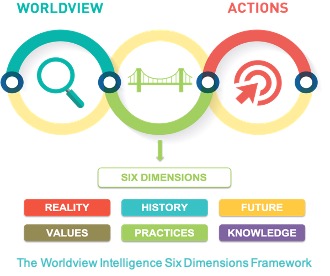
The Worldview Intelligence Six Dimensions Framework is used to make visible and understand the various worldviews of individuals, teams, departments, divisions and the company overall. Once visible, informed and animated conversations can take place about the influence and impact of worldviews on communication, trust, relationship, conflict and strategy.
Because the same Framework is useful in each context, it is easy to explore and compare worldviews, find points of connection and points of uncertainty, and to identify worldview clashes or collisions that can lead to tension or conflict that gets in the way of healthy teams or successful outcomes. It then becomes possible to bring the various worldviews into alignment so that everyone is pointed in the same direction, even as individuals bring varied and valued perspectives to the tasks, goals, challenges and opportunities. In this way, the Framework is also an analytical and diagnostic tool.
Worldview Intelligence High-Performance Teams Model
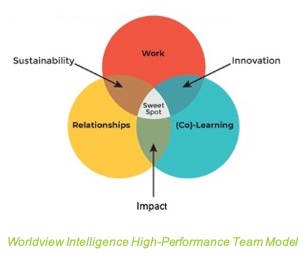
Healthy teams are a reflection and component of a Strategic Workplace Culture. The Worldview Intelligence High-Performance Teams Model identifies the components needed for healthy teams. Healthy, well-functioning teams ensure they pay attention to relationship and learning as well as work goals and outcomes. When these aspects are kept in balance, teams perform well, are more innovative, results are more sustainable over time and their impact is greater. People want to be part of and contribute to healthy teams.
A team assessment is used. The results spark discussion, enabling the team to identify gaps between current and desired culture and develop strategies to address the gaps. This all happens while keeping a focus on the purpose and goals of the team and their contribution to overall company performance.
Working with Uncertainty – The Chaordic Path, Diamond of Participation and Leading Through Uncertainty
More than ever before, workplaces are encountering uncertainty, whether this relates to internal conditions like restructuring, leadership or other changes, or external conditions like new competition, changing technologies, the state of the economy or supply chain challenges. Leaders must be equipped with an understanding of how to work with and communicate about uncertainty. Three patterns in this program that are particularly helpful are the Diamond of Participation, the Chaordic Path and Leading During Uncertainty.
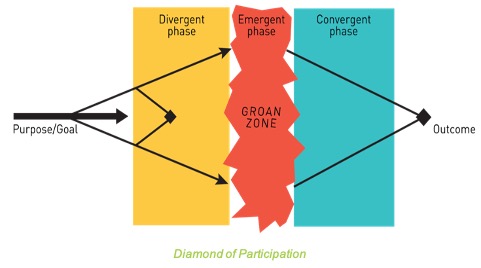
The Diamond of Participation identifies a pattern for successful meeting or project planning and understanding of group dynamics.
Any planning initiative creates the conditions for divergence, emergence and convergence. Divergence could look like brainstorming, the deliberate invitation of multiple worldview perspectives or research. Emergence is building on all of the ideas surfaced or presented in the divergent phase and creating the conditions for new ideas, new thinking or possible new solutions to emerge. Often during this phase, the “groan zone” is encountered. This is where uncertainty, tension and even conflict can become apparent. The skills taught in this program help move through groan zones to be able to get to the convergence phase where ideas are selected, strategies emerge and action plans can be created.
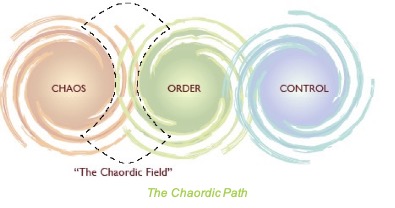
Another pattern that helps people understand the importance of working with uncertainty is the Chaordic Path. When chaos or uncertainty shows up, there is a temptation to rush to certainty or to grab for control. However, this often circumvents the team and its members in their own learning and skill development in how to work through tension, conflict and uncertainty. These skills are essential to a Strategic Workplace Culture, providing enough guidance so people know what they need to accomplish and enough agency to discover how to accomplish their goals or outcomes.
There is a place between uncertainty and certainty where sensing takes place. Sensing can include pausing, reflecting, inquiry, curiosity and more research so that better, more informed decision-making can take place. Research has shown that teams that can work with and address uncertainty and related conflict with respect and care outperform teams that move too quickly to decisions.
Worldview Intelligence CIDA-W Planning Model
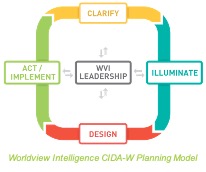
Participants work with the Worldview Intelligence CIDA-W Planning Model to create a consistent approach to planning. This, in turn, generates consistent results. This Planning Model can be applied to team meetings, creating engagement strategies and to the business processes created to sustain a Strategic Workplace Culture.
The phases of planning are not linear; rather, they are iterative. Practice with the CIDA-W Planning Model and phases will create competence where it becomes engrained in participants as a way of thinking and planning.
The Iceberg of Systems Thinking – Worldview Intelligence Intervention Points
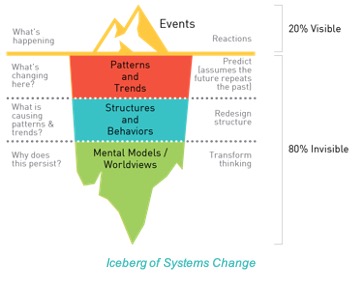
For a Strategic Workplace Culture Initiative to be successful it must address the deeper level patterns and the mental models that contribute to the events, situations or scenarios that demand attention and need to be addressed. Change initiatives or problem resolution that happens at the level of the visible events that are causing concerns often fail or create what are called “backfire loops” or “fixes that fail”. Unintended consequences occur where new challenges emerge which must then be addressed.
To change outcomes, the source of issues needs to be discovered. This is done by identifying and reflecting on the patterns and trends that are creating the event, the structures and behaviors that influence those patterns and trends and, ultimately, the thinking or mental models (worldviews) that led to the creation of those structures and behaviors. The deeper the explorations go, the greater the likelihood of discovering strategies that lead to the outcomes identified, or true Culture Change.
The Worldview Intelligence Approach is successful in discovering strategies for sustainable solutions. The Worldview Intelligence Six Dimensions provides a diagnostic framework, or an analytical approach, that uncovers blind spots allowing for more wholistic proactive responses to be identified.
Dynamic Learning Environment
Program results are achieved through the use of adult learning principles. The program incorporates a combination of teaching, reflection, assessments, application and collaboration to embed Strategic Workplace Culture business systems and processes into the ongoing operation of the organization, its teams and departments.
Program participants become a team, role modeling Strategic Workplace Culture, demonstrating the results, while working together to embed each element of the business model in the company on a monthly basis.
Worldview Intelligence, Worldview Leadership, the Worldview Intelligence Six Dimensions Framework, High-Performance Teams Model, and CIDA-W Planning Model and the Iceberg, are all proven methodologies for change. Participants will leave the program with a thorough understanding of each and the skills to use them when implementing a Strategic Workplace Culture Initiative.
Industries
This service is primarily available to the following industry sectors:
Energy
The energy sector’s contribution to GDP traces back to the industrial revolution. By harnessing coal, and later oil, this sector contributed to unprecedented industrial and economic growth, beginning in the 18th century. In the early days, this sector was primarily a supplier, meeting the energy intensive demands of industrialization. Fossil fuels became the bedrock of economic growth around the world. Over time, its role grew from its traditional dominance of fossil fuels to the accelerating adoption of renewable energy. By adapting and evolving, the energy sector continues to propel economic growth and shape the future of global economies.
In the latter half of the 20th century, there was a seismic shift in the energy sector landscape. This was due to the emerging geopolitics of oil, environmental concerns and the imperative of energy security, sparking a diversification of initiatives. A significant inflection point came in the 21st century with the rise of renewables in response to the need to mitigate environmental impacts. This created a whole new generation of job creation, technological innovation, including digitalization and smart grid technologies.
A Lifeblood of Modern Economies
Governments and businesses are increasingly recognizing the economic potential of renewables and their role in mitigating environmental impacts. They also see the role in job creation, technological innovation and economic growth. The intricate network of oil, gas, coal, renewables, and nuclear power forms the backbone of a country’s infrastructure, providing essential energy inputs that drive productivity and economic output, directly contributing to GDP.
The extraction, production, and distribution of energy resources generates substantial economic activity. From exploration and drilling operations in the oil and gas sector to the construction and maintenance of renewable energy infrastructure, each step in the energy value chain becomes a catalyst for job creation, technological innovation, and capital investment.
The energy sector is a barometer of economic health. Fluctuations in energy consumption and production often mirror the broader economic trends of a country. Surges in energy demand may signal periods of economic expansion, while contractions may indicate economic downturns. In this way, the energy sector is not only a participant in economic growth but also a crucial indicator. This helps policymakers navigate their economic landscape.
Strategic Importance of the Sector
The strategic importance of energy in international trade cannot be overstated. Countries endowed with abundant energy resources are key players in the global marketplace. Energy exports, whether in the form of fossil fuels or renewable energy technologies, contribute significantly to a country’s balance of trade. As the world transitions towards cleaner and more sustainable energy sources, countries investing in renewable energy become leaders in a new economic frontier and influencers of international trade dynamics. Many countries are recalibrating their energy policies, resulting in a global commitment to combating climate change that is accelerating the sector’s evolution towards sustainability.
The energy sector is a hub of innovation, with ongoing efforts to diversify energy sources and enhance efficiency. Investments in research and development drive technological breakthroughs. They seek to make energy production more sustainable and stimulate economic activity in adjacent industries. The rise of renewable energy technologies, energy storage solutions, and smart grid systems is transforming the energy sector and, at the same time, creating new markets and opportunities for economic growth.
Dynamic Tensions within the Sector
Despite its significant influence, the energy sector is not without its challenges. The dynamic tension between meeting growing energy demand and addressing environmental concerns poses a formidable challenge. The imperative for a transition to cleaner and more sustainable energy sources has become an integral part of the global economic agenda. Countries investing in renewable energy and embracing energy efficiency measures are not only contributing to environmental stewardship but also future-proofing their economies against the uncertainties of fossil fuel dependency.
The energy sector has traditionally been a male dominant industry, as well as a fossil
fuel dominant industry. The emergence of concerns about climate change, diversity of workforce, and attitudes towards gender and culture is creating challenges in the workplace for many energy companies. One result is that energy companies are having a difficult time retaining and recruiting new employees. Addressing these concerns through a strong Strategic Workplace Culture offers a path forward for companies to remain resilient in the face of changing environment, cultural and technological perspectives.
The energy sector’s role in shaping GDP is multifaceted and pivotal. Beyond being a commodity, energy is an enabler of economic progress, a driver of innovation, and a cornerstone of international trade. As the world grapples with the challenges of climate change and seeks a sustainable energy future, this sector can be a transformative force, powering prosperity and shaping the very contours of economic landscapes. In the sphere of global economic dynamics, the energy sector’s blend of power and potential means it is a key player in the pursuit of enduring global prosperity.
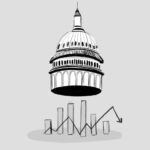
Government
Various forms of government have existed since the early spread of civilization. The substance of democratic and republican forms of government began to grow in the 17th century expanding in size and scale into the 19th and 20th centuries. The 21st century brought in the advent of a new movement in governance that has transcended traditional borders. Today, many forms of government exist to govern communities, cities, municipalities, states, provinces or parishes, regions and countries.
In the complex dynamics of economic progress, the role of government at all levels is a critical factor in shaping economic policies that impact Gross Domestic Product (GDP). From federal policies to local initiatives, each tier of government plays a unique part in steering the local, regional and national economies towards prosperity.
In today’s world, cities have evolved into global actors, fostering economic growth through innovation, technology and strategic positioning. Local governments now engage in and influence internal markets. Even with this, the different levels of government provide multifaceted contributions and impact. There remains a fine balance between central planning and decentralized innovation, between government intervention and market forces.
The impact that governments have through economic policies and regulation affects all sectors. This can lead to strong disagreements by the affected organizations as well as government employees. This, in turn, can lead to internal workplace and external relationship challenges. When this happens governments can become troubled places to work, at best, and dysfunctional, at worst. These factors are playing out now in many parts of the world.
Federal Fiscal Policies: Anchors of Stability
There is complexity involved in aligning the diverse interests and priorities of the differing levels of government. Federal governments have an array of fiscal instruments that can move markets and shape economic trajectories. Fiscal policies crafted at this level, include taxation, public spending, and monetary policy. They have far-reaching implications for the overall economic landscape. The ability to regulate money supply, interest rates, and national budgets places the federal government in a pivotal position to stimulate or restrain economic growth.
During times of economic downturn, the federal government usually takes center stage, offering stimulus packages and implementing monetary policies to inject liquidity into the markets. Conversely, during periods of overheating, fiscal measures may be aimed at curbing inflation and maintaining a stable economic environment.
State Initiatives: Laboratories of Economic and Workplace Experimentation
While federal policies provide a broad framework, states and provinces function as laboratories for economic and workplace experimentation. State and provincial governments possess the flexibility to tailor policies to local needs, creating a dynamic environment that fosters innovation and economic diversity. Initiatives such as tax incentives, infrastructure projects, and industry-specific regulations can contribute to the growth of local economies and, in turn, bolster the national GDP. Policies can also impact unionization, workplace safety and discrimination, childcare, and wages and benefits.
The role of states and provinces in education and workforce development also contributes substantially to economic output. A skilled and adaptable workforce, resulting from policies, enhances productivity and competitiveness, directly influencing the economic health of a region. By investing in education and vocational training, state and provincial governments can catalyze long-term economic growth and ensure their
communities remain vibrant and resilient in the face of economic shifts.
Municipalities: The Grassroots of Economic Development
At the local level, municipalities, no matter their size, can impact their economies through urban planning, infrastructure development, regulations, especially regarding employment policies, and local business support. The success of small and medium-sized enterprises (SMEs) often hinges on the regulatory environment and support provided by local governments. By streamlining bureaucratic processes, offering financial incentives, and fostering a conducive business climate, municipalities can stimulate local economic growth and contribute to the national GDP.
Local governments are also at the forefront of sustainability initiatives, promoting environmental responsibility and creating green economies. Investments in renewable energy, eco-friendly infrastructure, and sustainable urban development not only contribute to GDP but also position communities for long-term resilience in the face of global challenges such as climate change. They are also often the leaders in minimum wage, benefit, safety, discrimination, parental and family leave policies and more. These policies can create both very positive or potentially negative workplace cultures.
Current Recruitment and Retention Trends and Challenges
Historically, government jobs offered good pay, benefits, and job security. There was a certain level of esteem that came with the positions and people vied for a prestigious government position. However, over the last number of years, that mind frame has changed. Now, citizens in many countries are often at odds with one another based on their politics and beliefs. This contributes to prevailing negative attitudes about government, making fewer people want to apply for positions, and it makes the people who currently work for the government feel less excited about their positions, less motivated and more likely to look for other opportunities. Additionally, private sector pay and benefits are now substantially higher than that of governments because of increased competition for workers.
Collaboration for Comprehensive Growth
To have successful economic growth, the collaboration between different levels of government is of paramount importance. The interplay of and intersections between federal, state or provincial, and local policies, initiatives or strategies can create a robust economic ecosystem. Coordination and collaboration in areas such as infrastructure investment, innovation hubs, and social welfare programs ensures a comprehensive approach that addresses the diverse needs of a nation. Conversely, lack of collaboration can lead to unnecessary competition for workers, financial resources and environmental mitigation.
As complexities of economic and workforce governance are navigated, the role of each level of government becomes clear: federal policies provide stability, state and provincial initiatives drive innovation, and municipalities shape the foundation for local growth. Together, they orchestrate a path towards sustained economic prosperity and strong Strategic Workplace Cultures. The adaptability of government structures to the ever-changing forces of economic challenges and opportunities is essential. The intricate balance between all levels of government is the key to unlocking a nation’s full economic potential and ensuring a resilient and vibrant future.
Organizations, departments and teams that create a Strategic Workplace Culture achieve higher employee engagement, morale, and trust; and increased productivity. This supports a culture of innovation, nurtures healthy teams, and can produce great customer experiences. Importantly, research shows that the public perception of government employment has changed, attracting and retaining new talent. There is reduced fear of taking calculated risks, and people’s lives are changed for the better, making government a desirable place to work.
Healthcare
In today’s world, the healthcare sector, which in addition to hospitals and clinics includes businesses that provide medical services, manufacture medical equipment or drugs, provide medical insurance, or otherwise facilitate the provision of healthcare to patients, is a significant contributor to GDP, the economy and economic growth. While the history of healthcare is rooted in “home” remedies and drastic experimentation to discover treatment and surgical solutions to the healthcare challenges society faced, today it is a thriving, research and science-based sector.
Knowledge of healing, medical interventions, health and wellbeing continues to evolve as the delivery of medicine and medical techniques has become standardized and is subjected to rigorous evaluation on an ongoing basis. The role of technology in the delivery of healthcare services has also been evolving and will play a more prominent role into the future.
The healthcare sector influences the economic vitality of communities, states or provinces and nations. As the global economic landscape continues to evolve, the role of the healthcare sector in contributing to the overall Gross Domestic Product (GDP) has assumed unprecedented significance. There are several factors that render it an indispensable force in shaping the fiscal health of nations.
An “Invisible Engine” of Economic Growth
The healthcare sector has been dubbed the ‘invisible engine’ of economic growth. It goes beyond the humanitarian mandate of the sector to playing a pivotal role in driving GDP. At first glance, the sector may appear as a consumer of resources, with high infrastructure and labor costs. However, a deeper analysis illuminates the dynamic ecosystem that preserves the health and wellbeing of a nation’s citizens and catalyzes economic activity across multiple fronts.
The healthcare sector is a substantial employer. The need for a diverse workforce, ranging from skilled medical professionals to administrative staff, generates a considerable number of jobs. It offers opportunities for highly skilled and educated professionals as well as laborers who may not require educational certificates. The ripple effect extends to associated industries, such as pharmaceuticals, medical equipment manufacturing, and healthcare technology, which aids in creating a job market that fuels consumer spending and stimulates economic growth.
A Bastion of Innovation and Technological Growth
The healthcare sector is a key source of innovation. Investment in research and development not only advances medical science but also cultivates an environment conducive to technological breakthroughs. Innovations in healthcare, whether in pharmaceuticals, medical devices, or digital health solutions, transcend national borders, contributing to international trade and positioning some countries at the forefront of the global marketplace.
In recent years, the health technology sector has been rapidly expanding, becoming a key driver of economic growth. The integration of artificial intelligence, telemedicine, and digital health platforms has not only enhanced patient care but has fostered entrepreneurship and job creation. Start-ups and established companies alike are capitalizing on the intersection of healthcare and technology, creating a healthtech revolution and injecting vigor into economies.
A Healthy Population is a Productive One
A healthy population is an inherently productive one. The preventative measures and curative interventions provided by the healthcare sector result in a workforce that is not only physically robust but also mentally resilient. This contributes to reductions in absenteeism, increases in labor productivity, and ensures a higher quality of work. Countries with a robust healthcare infrastructure containing a Strategic Workplace Culture are better positioned to attract and retain a skilled workforce, which strengthens their competitive edge in the global economic arena.
Resilient and Adaptable
The COVID-19 pandemic served as an acute reminder of the healthcare sector’s centrality to economic stability. As nations grappled with the health crisis, the resilience and adaptability of healthcare systems became instrumental in navigating the economic fallout. Investment in healthcare infrastructure, pandemic preparedness, and medical research emerged as strategic imperatives, underscoring the sector’s indispensable role in mitigating economic shocks.
The healthcare sector is not merely an expense on a nation’s balance sheet; it is an investment in the prosperity and wellbeing of its citizens. As countries confront the challenges of an ever-changing economic landscape, a robust and innovative healthcare sector stands as a pillar of strength. It drives job creation, fosters technological advancements, and ensures a healthy and productive population. The symbiotic relationship between healthcare and GDP growth is not only a matter of fiscal wellbeing but a testament to the intertwined destinies of economic prosperity and public health.

Banking & Financial Services
The story – past, present and future – of the financial and banking sector is one of adaptation, innovation and transformation. Its origins began as a custodian of wealth and over the eras has evolved to contemporary times of digital disruption with seismic shifts in technology, regulation and global economies. In this way, the financial and banking sector takes center stage in influencing GDP, nationally and globally. It orchestrates capital flows, investments, and financial instruments. The sector continues to be a custodian of wealth and an indispensable force in propelling economic growth and shaping the future of nations.
The rise of commercial banking, providing financing for the expansion of businesses and contributing substantially to national and global GDP, coincides with the industrial revolution. Additionally, the 20th Century brought about a paradigm shift reflected in the emergence of investment banking, capital markets and global financial architecture. It is also marked by increasing interconnectedness, cross border transactions and the expansion of international trade. All of this required new workforce skills and new customer services and relationships.
Vital to Economic Activity and Stability
At its core, the financial and banking sector is vital to economic activity. By facilitating the flow of capital, it makes it possible for businesses to expand, innovate, and thrive. The sector’s primary function, intermediating between savers and borrowers, underpins the very foundations of economic growth. As businesses secure funding for expansion and individuals access capital for major expenditures, the banking sector sustains the momentum of economic development.
Job creation is one of the most tangible contributions of the financial and banking sector to GDP. Beyond the skyscrapers that define financial districts, there exists a vast network of employees ranging from investment bankers and analysts to tellers and financial advisors. The employment generated by the sector fuels personal consumption and fosters a skilled, specialized and ever evolving workforce that contributes to broader economic productivity. These ongoing changes can have an impact on workplace environment and customer relationships, inviting the opportunity to be strategic about workplace culture.
The financial and banking sector is a driver of economic stability. Through prudent risk management, effective regulatory frameworks, and the provision of financial services, banks contribute to the resilience of economies. The sector’s role in efficiently allocating resources, managing liquidity, and mitigating financial risks ensures that economies operate smoothly, minimizing the impact of shocks and uncertainties.
Role in Facilitating International Trade and Innovation
The sector’s role in facilitating international trade is pivotal. Globalization means national economies are interconnected. The financial and banking sector acts as the conduit for cross-border transactions, trade finance, and currency exchanges. Financial institutions enable businesses to access capital from international markets, fostering economic integration and contributing to a nation’s competitiveness on the global stage. It also means that the sector has an increasingly diverse employee base and is dealing with differing cultural practices regarding lending and borrowing.
Innovation is a hallmark of the financial and banking sector. Today, technology is reshaping the landscape at an unprecedented pace. The rise of fintech, blockchain, and digital banking enhances efficiency within the sector and generates new avenues for economic activity. Mobile banking, online payments, and digital lending platforms are not just conveniences, they are transformative tools that empower individuals and businesses. They are also contributing to the changing needs of employee skills and workplace culture.
Dynamic Tensions and Challenges in the Sector
This sector is not without its challenges. It still bears the scars of the 2008 global financial crisis, the collapse of Lehman Brothers and the subsequent ripple effect. This includes the vulnerabilities that were exposed. Post that crisis, there has been an emphasis on greater resiliency and accountability across the sector, which are also characteristics of a Strategic Workplace Culture.
The balance between innovation and regulatory stability requires continual attention. The specter of financial crises and the need for robust risk management underscores this sector’s responsibility in maintaining confidence and stability. Additionally, there has been a movement toward sustainable finance with an increasing awareness of ESG – a focus on environment, social and governance considerations. This has signalled a change in investment preferences. In this way, this sector’s contributions to GDP are harmonized with the broader considerations of societal wellbeing and environmental sustainability.
The financial and banking sector is an indispensable force in global GDP. Beyond the ledgers and balance sheets, this sector is an architect of economic growth, a steward of stability, and a catalyst for innovation. Firms that have a Strategic Workplace Culture will be able to more successfully navigate through the local, national and global complexities of rapidly evolving technologies and economies. A strong and Strategic Workplace Culture will be the foundation that keeps the financial and banking sector resilient, shaping the future of nations, and fortifying the foundations of prosperity.

Non-profit & Charity
From the early origins of organized society, charitable organizations and NGO’s have existed in one form or another. They play a vital role in society, the economy and in the distribution of services and support for those they serve. While somewhat different in composition and structure, they comprise the third sector, also known as the not-for-profit sector. Charities and foundations are often established to address or support a specific social or health related cause. An NGO, or Non-Governmental Organization, is a nonprofit that operates independently of government. The purpose of an NGO typically is to address a social or political issue.
Historically viewed as secondary players in the economic narrative, the role of NGOs and charities in the economy may have been overlooked due to their real and perceived noble or altruistic goals and endeavors. A closer look, however, reveals that these organizations play a key role in contributing to the overall Gross Domestic Product (GDP) in local, state or provincial, national and international economies. This is in addition to being a driving force for societal progress and economic development. The evolution of the sector reflects a deliberate shift towards professionalism and specialization, creating a skilled workforce that not only supports the sector’s goals but
also fuels broader economic productivity.
Beyond Traditional Metrics, Catalysts for Innovation and Social Entrepreneurship
The traditional metrics of GDP typically emphasize tangible goods and services produced. The economic influence of NGOs and charities extends far beyond this. The philanthropic sector, characterized by its commitment to social causes, has become a formidable player in shaping economies through its diverse array of activities, including financing loans traditional banks won’t, supporting minority business development, and addressing social and employment discrimination.
A pivotal aspect of the sector’s evolution is its transition from traditional models of charity to more innovative approaches. NGOs and charities are no longer confined to direct service provision but have become incubators of innovative solutions to complex societal challenges. This evolution has given rise to social entrepreneurship and the development of revenue-generating models that sustainably fund philanthropic initiatives. These innovations can lead to social progress, and they can spawn economic opportunities.
A fundamental aspect of the financial influence of NGOs lies in their capacity to generate employment and stimulate economic activity. Charities, ranging from global giants to local grassroots organizations, create a vast network of employment opportunities across sectors such as education, healthcare, social services, and environmental conservation. This provides livelihoods for many individuals and contributes to overall economic stability by reducing unemployment rates and fostering human capital development.
Collaborative Partners and Redistribution of Wealth
NGOs are known for their collaborations, recognizing the importance of bringing together various partners to achieve larger societal goals. This includes other NGOs, private companies and governments. These collaborations can create and nurture impactful initiatives that address larger social and justice issues while also generating economic value. By bringing a recognition of and focus on social determinants of economic prosperity, the importance and influence of this sector in shaping public policy is growing.
Charities are significant contributors to the redistribution of wealth, funneling resources towards initiatives that alleviate poverty, improve education, and enhance healthcare. These investments result in tangible benefits, ranging from increased productivity to a healthier and more skilled workforce, ultimately bolstering the economic foundation of nations.
Strategic Role in Crises
The philanthropic sector plays a strategic role in crisis management and disaster relief, as demonstrated during earthquakes, tsunamis, hurricanes, fires and floods and the COVID-19 pandemic. NGOs swiftly raise funds from individual and business donors, mobilize resources, provide essential services, and support vulnerable populations, working to mitigate the socio-economic fallout of crises around the world. The ability of charities to respond effectively to emergencies contributes not only to social resilience but also to the overall economic stability of nations.
The interconnected nature of global economies means that the impact of NGOs extends beyond national borders. International charities and non-profits foster diplomatic and economic ties between nations, transcending traditional geopolitical boundaries through collaborations. They often act as intermediaries, facilitating cross-border partnerships, promoting sustainable development, and contributing to global economic integration.
As NGOs and charities become more directly involved in social and justice movements,
they are increasingly facing workforce culture challenges, especially as their workforces move beyond primarily white staff to becoming more diverse, reflecting the variety of cultures they work with. These challenges can lead to workplace tensions as employees seek to adapt to multi-cultural environments. Having a strong Strategic Workplace Culture is one action NGOs can take to strengthen their workplace culture.
Multiplier Effect of NGO Philanthropic Investments
Critics may argue that the financial contribution of NGOs is negligible compared to traditional industries. However, this perspective overlooks the multiplier effect of philanthropic investments. By addressing root causes of societal issues, NGOs and charities create a positive feedback loop that results in long-term economic benefits.
The evolution of NGOs and charities is a compelling narrative of transformation. Beyond the sector’s influence on GDP, driven by a commitment to social impact, these organizations are key players in shaping the economic and human future of nations. As governments and businesses increasingly recognize the interconnectedness of economic and social progress, the philanthropic sector stands as an invaluable partner in forging a path towards a more sustainable and inclusive global economy. Charitable capitalism, with its focus on both profit and purpose, emerges as a paradigm that not only transforms societies but also catalyzes economic prosperity in an interconnected world.
Locations
This service is primarily available within the following locations:

Chicago
Known as the “Windy City,” Chicago is experiencing a remarkable financial renaissance, defying economic obstacles and showcasing incredible resilience in the face of local and global challenges. The city’s diverse economy, strategic location, and concerted efforts in infrastructure development and public safety have contributed to its robust economic outlook.
Strategic Position as a Transportation Hub
At the heart of Chicago’s economic narrative lies its central North American location and extensive transportation infrastructure. The city’s strategic position as a transportation hub is evidenced by its robust rail, road, and air networks. This has catalyzed economic activities and propelled Chicago into a pivotal role in the movement of goods and people. The sprawling O’Hare International Airport, one of the busiest in the world, epitomizes Chicago’s connectivity to global markets, facilitating trade and contributing significantly to the city’s GDP.
Infrastructure upgrades has been a focus for the city, with ambitious projects underway to enhance connectivity and transportation. The O’Hare Modernization Program, a multi-billion dollar initiative, is transforming Chicago’s main airport into an even bigger global aviation hub. This project aims to bolster the city’s competitiveness in the international travel and logistics sectors.
Thriving Financial Markets
Chicago’s financial markets are thriving, with the Chicago Mercantile Exchange (CME) at the forefront of global derivatives trading. The city’s futures and options markets have continued to attract international investors, solidifying Chicago’s status as a major financial hub. The Chicago Board Options Exchange (CBOE) also remains a key player in the financial sector, providing innovative products and services.
From Legacy to the Forefront of Manufacturing and Technology
The manufacturing legacy in this city has seamlessly transitioned into the 21st century, with advanced manufacturing and technology at the forefront. The city’s ability to balance its industrial heritage with forward-thinking technological advancements bolsters its economy and creates a foundation for future growth in emerging sectors. The city’s commitment to fostering innovation is evident in the 1871 Technology Incubator, which has nurtured countless successful ventures, making it an attractor for start-ups and established tech companies alike. The city’s achievements in manufacturing innovation, coupled with a skilled workforce, have positioned Chicago as a hub for cutting-edge industries. Chicago’s tech scene draws talented, skilled professionals from around the world.
Sustainable and Green Practices
Chicago’s commitment to sustainable practices is reflected in initiatives such as the Chicago Riverwalk expansion and the implementation of environmentally friendly urban policies. These efforts have not only improved the quality of life for residents but also positioned Chicago as a leader in sustainable urban development.
The real estate market in Chicago has shown substantial resilience as well as aesthetic accomplishment. The skyline, marked by modern marvels such as the John Hancock Center and the recently completed Salesforce Tower, stands as a testament to Chicago’s ability to adapt and thrive in the ever-changing economic landscape. Despite challenges faced by the broader real estate sector, Chicago has experienced steady growth in both commercial and residential markets. The city’s iconic skyline continues to evolve with new developments, attracting both local and international investors.
Cultural, Entertainment and Education Destination
Chicago’s cultural offerings include its renowned theaters, museums, and vibrant arts scene. They are cultural assets that contribute to a thriving economy. The city’s appeal as a cultural and entertainment destination attracts visitors from around the world, fueling the tourism industry and generating revenue. Chicago also has a thriving professional sports scene, which includes the Chicago Cubs, White Sox, Bears, Bulls, Blackhawks, Sky, Wolves, Fire and Red Stars.
Educational institutions in Chicago play a crucial role in shaping the city’s economic future. Collaboration between academia and industry puts Chicago at the forefront of research and development. Renowned universities and research centers, such as the University of Chicago and Northwestern University, are hubs of innovation and intellectual capital, supporting a skilled workforce that contributes to the city’s economic vitality.
Resilient and Dynamic
Chicago has demonstrated a remarkable ability to adapt and thrive. The city’s diversified economy, coupled with strategic investments in technology, infrastructure, and sustainability, positions Chicago as a resilient and dynamic player in the global economic landscape. As Chicago continues to evolve, it remains a city to watch for investors and businesses seeking opportunities in a forward-looking and robust economic environment.

New York City
The Big Apple. New York City. Immortalized in Frank Sinatra’s famous song as the city that never sleeps. “If I can make it there, I can make it anywhere.” A city of hopes and dreams, teeming with people and opportunity.
Enduring Allure and Iconic Landmarks
There is an enduring allure to New York City that draws people and investments to it. The Statue of Liberty, Times Square, Central Park, 5th Avenue, the Empire State Building, the Metropolitan Museum of Art and, of course, the memorial to 911, are all distinctly recognizable as New York City features.
At the heart of New York City’s economic might lies the iconic Wall Street, a global symbol of financial power. The New York Stock Exchange (NYSE) and Nasdaq are the epicenters of the world’s financial markets, where fortunes are made and lost, and economic trends are set. The city’s financial markets attract global investors drawn to the stability and adaptability that define New York’s financial landscape.
Global Media and Entertainment Capital
A distinctive feature of New York City is its role as a global media and entertainment capital that adds both cultural richness and economic vibrancy. The Broadway theater district, film production studios, and major media conglomerates headquartered in the city contribute not only to the city’s GDP but also to its global cultural influence. The media and entertainment sector’s achievements in New York reverberate across the world, influencing trends and setting benchmarks for creative industries.
The New York area is home to more professional sports teams than any other major US metropolitan area. Teams include the Knicks and Nets (NBA), Rangers, Islanders and Devils (NHL), Yankees and Mets (MLB), Jets and Giants (NFL), NYC FC and Red Bulls (soccer) and the NJ/NY Gotham FC (women’s soccer). Sports enthusiasts can enjoy a variety of games and events.
A Bustling Tech Ecosystem
Silicon Alley, a bustling tech ecosystem, has experienced exponential growth and is a source of innovation and entrepreneurship, attracting top-tier talent. With its concentration of tech start-ups and venture capital, it has solidified New York’s position as a rival to Silicon Valley. The city’s achievements in fostering a vibrant tech ecosystem contribute significantly to its GDP and underscore its ability to thrive in the knowledge-driven economy.
The city’s commitment to technology is evident in initiatives like the NYC Tech Talent Pipeline, which aims to bridge the gap between the tech industry’s demands and the skilled workforce available in the city.
Real Estate. Trade. Infrastructure
New York City’s real estate market is not merely a marketplace, it is a testament to economic resilience and architectural splendor. It experienced shifts in the wake of the pandemic, but continues to be a driving force in New York City’s economic engine. Adaptive reuse projects and sustainable urban planning initiatives are shaping the future of New York’s real estate, aligning with global trends and environmental considerations.
New York City, with New Jersey, is home to the largest port on the East Coast, underscoring the city’s historic role as a gateway for global trade. The port’s strategic location and efficient operations facilitate the movement of goods, making it a vital link in the global supply chain. New York’s achievements in international trade contribute substantially to its GDP, solidifying its position as a global trading hub.
Infrastructure projects, such as the revitalization of Penn Station and the expansion of the Second Avenue Subway, demonstrates New York City’s commitment to maintaining its position as a global transportation hub. These projects enhance the city’s connectivity and contribute to job creation and economic growth, laying the groundwork for a more resilient and efficient urban environment.
Education and Research
Education and research excellence are integral components of New York City’s economic success. With prestigious institutions like Columbia University and New York University, the city attracts top talent that supports a city-wide culture of research and innovation. Investment in education is positioning New York as a hub for cutting-edge developments in various fields, from finance to technology and beyond. The collaboration between academia and industry has positioned New York as a leader in scientific research, technology development, and medical advancements, further contributing to the city’s economic output.
Economic Revitalization and Forward-Looking Leadership
As the world grapples with the challenges of a post-pandemic era, the diversity of New York’s sectors is driving a robust renewal and recovery. The city is emerging as a symbol of economic revitalization and forward-looking leadership. The city’s ability to adapt, innovate, and reinvent itself positions it as a model for urban resilience. For investors seeking opportunities in a dynamic and multifaceted economic landscape, New York City remains a prime destination at the forefront of the global financial stage.
Toronto
Toronto is Canada’s largest city and a world leader in business, finance, technology, entertainment and culture. Its large population of immigrants from across the globe has also made Toronto one of the most multicultural cities in the world. With a waterfront that spans Lake Ontario, Toronto has emerged as a financial powerhouse, with a lasting impact on global GDP. The city’s story is one of economic resilience and dynamism. The city has had a remarkable journey from a regional hub to an international financial center. This journey has been characterized by strategic foresight, robust financial institutions, and a diverse economic landscape.
High Quality of Life Rankings
Toronto consistently ranks high in global quality of life indices. Factors such as healthcare, education, safety, cleanliness and abundant green spaces contribute to the city’s reputation as a desirable place to live. The Distillery District is a historic area known for its preserved 19th-century buildings, cobblestone streets, and vibrant arts and culture scene. It’s a popular destination for shopping, dining, and entertainment.
The city is celebrated for its cultural diversity and inclusivity. Neighborhoods throughout the city reflect the rich tapestry of different ethnicities and communities. Known for its world-class cultural institutions, including the Royal Ontario Museum (ROM), the Art Gallery of Ontario (AGO), and the Toronto Symphony Orchestra, as well as the iconic CN Tower, the city has a vibrant arts and cultural scene.
Toronto is a major center for the film and television industry, hosting numerous productions. The sector contributes to job creation, tourism, and the city’s reputation as “Hollywood North.” Businesses related to film production, post-production services, equipment rentals, and set design can find opportunities. The Toronto International Film Festival (TIFF) is one of the most prominent film festivals globally. It attracts filmmakers, celebrities, and film enthusiasts from around the world, showcasing a diverse array of films.
Toronto is home to several professional sports teams, including the Maple Leafs (NHL), the Blue Jays (MLB), Raptors (NBA), the Argonauts (Canadian football, FC (soccer) and the PAHL Toronto (women’s hockey). Sports enthusiasts can enjoy a variety of games and events.
Toronto is a significant center for healthcare and life sciences, with major hospitals, research institutions, and biotech companies. The sector contributes to medical research, innovation, and the city’s reputation as a center for health sciences.
Sophisticated Financial Center
At the heart of Toronto’s city core is its robust and sophisticated financial sector. It is home to the Toronto Stock Exchange (TSX), one of the world’s largest stock exchanges by market capitalization. It has a rich history, dating back to the 19th century and having evolved into a global financial force, providing a platform for companies to raise capital and facilitating efficient capital allocation. Toronto’s financial district is anchored by iconic skyscrapers, serving as a nerve center for banking, investment, and capital market activities, contributing substantially to the city’s GDP.
Toronto’s banking sector is an integral component of its economic success story. It hosts the headquarters of Canada’s largest banks, including the Royal Bank of Canada (RBC), Toronto-Dominion Bank (TD), and Scotiabank. These banking giants have weathered global financial storms while expanding their footprint internationally to become global players in the financial services landscape. The resilience and innovation demonstrated by Toronto’s banking sector are key contributors to the city’s significant economic output.
A Global Destination for Real Estate Investment and Infrastructure Development
The real estate boom in Toronto stands as another feather in the city’s economic standing. The skyline is dotted with gleaming condominiums and commercial towers. Toronto’s property sector has been a driver of economic growth, attracting international investors, solidifying the city’s position as a global destination for real estate investment. The condominium-led construction boom has created jobs, stimulated economic activity, and added a substantial asset class to Toronto’s economic portfolio.
Infrastructure development has been a key focus for Toronto, with projects such as the Ontario Line and the Eglinton Crosstown LRT enhancing the city’s transportation network. These initiatives aim to address the challenges posed by the city’s growing population, ensuring that Toronto remains an accessible and efficient urban center.
A Technology Hub with Investments in Research and Education
The diversity of Toronto’s economy is a hallmark of its strength. Beyond finance and real estate, the city boasts a burgeoning technology sector that has gained international acclaim. The rise of Toronto as a technology hub, often referred to as “Silicon Valley North,” has been fueled by a robust ecosystem of startups, research institutions, and a skilled workforce. The MaRS Discovery District and the Vector Institute for Artificial Intelligence stand as testaments to the city’s commitment to fostering innovation and technological advancements. Toronto is positioned at the forefront of the global tech landscape.
The city’s investment in research and education is paying dividends, creating a skilled workforce that fuels Toronto’s economic engine. Home to prestigious universities such as the University of Toronto and Ryerson University, the city attracts a diverse pool of talent. The symbiotic relationship between academia and industry is driving innovation and economic growth across various sectors.
Sustainable Development and Environmental Responsibility
The city’s commitment to sustainable development and environmental responsibility underscores its forward-looking approach to economic prosperity. The city’s ambitious climate action plans and green infrastructure projects underscore a dedication to responsible urban development. This commitment not only enhances the quality of life for residents but also positions Toronto as a leader in sustainable urban practices.
Initiatives to reduce carbon emissions, enhance public transportation, and promote green infrastructure have been implemented that position Toronto as a leader in sustainable urban development while contributing to the city’s economic resilience in the face of global challenges.
Strategic Vision, Diverse Economic Portfolio and Commitment to Innovation
Toronto’s recognition as a financial and economic hub is a testament to its strategic vision, diverse economic portfolio, and commitment to innovation. The city’s achievements resonate globally, with its financial institutions, real estate market, technology sector, and educational institutions collectively propelling Toronto into the top echelons of international economic significance. As Toronto continues to navigate the evolving landscape of global finance and industry, its achievements stand as an example of economic excellence, influencing not only the local economy but leaving a mark on the global GDP.

Vancouver
The port of Vancouver, Canada’s largest and most diversified, is a vital gateway between North America and the Asia-Pacific region. With state-of-the-art container terminals, efficient logistics, and strategic trade connections, the port facilitates the smooth flow of goods, contributing significantly to Vancouver’s GDP. Vancouver’s achievements in port management and trade have elevated its economic standing and solidified its international reputation.
Strategic Focus on Sustainable Development
Vancouver’s strategic focus on sustainable development and related innovation, coupled with a diverse economic landscape, has provided the city with a robust and resilient economy, even amidst global uncertainties. The city’s journey from a picturesque seaport to a thriving economic hub is marked by strategic investments, diverse industries, and a commitment to sustainability, positioning it as a key player in the international economic arena.
In the financial sector, Vancouver has witnessed a steady rise in prominence. While not a traditional financial hub, the city’s financial institutions, such as the Vancouver Stock Exchange, have gained traction, attracting investors with a penchant for stability and responsible investment practices. Vancouver has a commitment to ethical finance. This is reflected in the growing interest from socially conscious investors seeking opportunities in a city that values sustainable and responsible business practices.
The city’s technology sector is on a meteoric rise, with Vancouver emerging as a hotspot for innovation and entrepreneurship. The Vancouver Tech Hub, with strengths in artificial intelligence, video gaming, and clean technology, has become a nucleus for start-ups and established companies alike. The city fosters an environment of collaboration and ingenuity, fueling its knowledge economy. With a diverse talent pool, the city’s focus on technology and green innovation aligns with global trends, positioning Vancouver for its environmentally conscious tech development.
Leading Edge in Implementing Green Initiatives
Vancouver is on the leading edge in implementing green initiatives, with an emphasis on renewable energy, waste reduction, and carbon neutrality. The city’s dedication to becoming one of the world’s greenest cities has garnered international recognition and created economic opportunities in the clean energy and sustainability sectors.
Real estate, a historically significant aspect of Vancouver’s economic landscape,
continues to be a key driver. The city’s skyline is marked by recognizable condominiums and sustainable architectural marvels, with the real estate market adapting to changing global dynamics. Vancouver’s real estate resilience, coupled with a focus on green building practices, attracts both local and international investors who are seeking a blend of urban sophistication and environmental responsibility.
A Destination for Both Leisure and Business Travelers
Vancouver’s tourism industry, propelled by the area’s natural beauty and proximity to winter and summer sports, cultural diversity, and vibrant arts scene, is a significant contributor to its economic vibrancy. The city’s appeal as a destination for both leisure and business travelers has resulted in a robust hospitality sector, supporting jobs and generating revenue. Vancouver’s ability to seamlessly blend urban sophistication with natural splendor positions it as a unique and desirable destination on the global tourism map.
Educational institutions like the University of British Columbia and Simon Fraser University contribute to Vancouver’s economic vibrancy by cultivating a skilled and innovative workforce. The city’s investment in research and development aligns with its vision for a knowledge-based economy, attracting top-tier talent and fostering an environment of continuous learning and innovation.
Balancing Economic Growth with Sustainable Development
As Vancouver charts its economic course, its emphasis on sustainable development, technological innovation, and responsible business practices sets it apart on the global stage. The city’s ability to balance economic growth with environmental stewardship positions Vancouver as a model for cities worldwide. For investors seeking not only financial returns but also a commitment to sustainable and responsible business practices, Vancouver emerges as an enticing destination at the forefront of the global economic landscape.
London
As one of the world’s major global cities, London exerts a strong influence on world art, entertainment, fashion, commerce and finance, education, health care, media, science and technology, tourism, transport, and communications. Europe’s most economically powerful city, it is one of the major financial centers in the world. The city’s achievements resonate globally and its economic contributions extend far beyond the banks of the River Thames.
Most Visited City in Europe
London is the most visited city in Europe and has the busiest city airport system in the world. The London Underground is the oldest rapid transit system in the world. It is home to four World Heritage Sites: the Tower of London; Kew Gardens; the combined Palace of Westminster, Westminster Abbey, and St Margaret’s Church; and the historic settlement in Greenwich, where the Royal Observatory, Greenwich, defines the prime meridian (0° longitude) and Greenwich Mean Time. Other landmarks include Buckingham Palace, the London Eye, Piccadilly Circus, St Paul’s Cathedral, Tower Bridge, and Trafalgar Square.
London has many museums, galleries, libraries, and cultural venues, including the British Museum, National Gallery, Natural History Museum, Tate Modern, British Library, and numerous West End theatres. Important sporting events held in London include the FA Cup Final, the Wimbledon Tennis Championships, and the London Marathon. In 2012, London became the first city to host three Summer Olympic Games.
London’s diverse cultures encompass over 300 languages. The 2023 population of Greater London of just under 10 million made it Europe’s third-most populous city, accounting for 13.4% of the population of the United Kingdom and over 16% of the population of England. The Greater London Built-up Area is the fourth-most populous in Europe. The London metropolitan area is the third-most populous in Europe, with about 14 million inhabitants, granting London the status of a megacity.
The Port of London: A Modern-Day Logistical Hub
The port of London, historically one of the world’s busiest, has evolved into a modern logistical hub. With its strategic location along the Thames, the port facilitates the smooth movement of goods, contributing substantially to London’s GDP. The city’s achievements in international trade and logistics position it as a key player in the global supply chain, linking continents and fostering economic growth.
Financial Excellence, Technological Innovation and Strategic Urban Planning
Despite the challenges posed by global uncertainties, the city’s financial sector, technological innovation, and strategic urban planning are driving forces in London’s economic narrative. The financial district, centered around the historic City of London, stands as a symbol of financial excellence, even in turbulent times. The London Stock Exchange (LSE), with its storied history, continues to attract international investors, underlining London’s status as a global financial center. The city’s banking institutions include venerable names like Barclays and HSBC. They demonstrate resilience and adaptability, positioning London at the forefront of the ever-evolving global financial services industry.
Beyond finance and culture, the city’s technology sector, commonly referred to as Tech City or Silicon Roundabout, has experienced substantial growth. It has propelled London into the league of cities leading technological innovation. The city’s commitment to technological advancements is evident in initiatives that support the growth of tech companies and talent across the UK. Achievements in the tech sector, from fintech to artificial intelligence, underscore London’s capacity to thrive in the digital age.
Defining Real Estate and Infrastructure Developments
Real estate, a defining feature of London’s skyline, remains a key driver of economic activity. The skyline, adorned with iconic landmarks like The Shard and The Gherkin, reflects the city’s commitment to innovation and urban development. The city’s real estate sector showcases resilience and adaptability.
Developments such as the Battersea Power Station project and the transformation of King’s Cross exemplify London’s commitment to sustainable urban development and the rejuvenation of iconic landmarks. London’s real estate market, encompassing residential, commercial, and cultural spaces, contributes significantly to the city’s GDP and attracts global investors seeking a stake in its iconic landscape.
London’s infrastructure projects, including the ongoing expansion of the Crossrail network and ambitious plans for the Thames Estuary, demonstrate the city’s commitment to modernizing its transportation networks. These projects enhance connectivity within the city and position London as a hub for global trade and commerce.
Educational Excellence
The educational excellence of London further cements its role as a global economic powerhouse. The city is home to renowned universities and research institutions such as Imperial College London, the London School of Economics and the London School of Business, focusing on innovation and driving advancements in science, technology and business strategies. The collaboration between academia and industry positions London as a leader in research and development, contributes to the city’s GDP and influences global trends in various fields. This strategically positions London in the knowledge economy, attracting a skilled and innovative workforce.
Adaptation and Innovation
As London navigates the complex geopolitical and economic landscape, its ability to adapt and innovate remains a testament to its enduring strength. While England as a whole weathers the impact of Brexit, London continues to thrive. The city’s commitment to sustainable development, coupled with its financial resilience and technological prowess, positions London as a key player in the global economic arena. For investors seeking stability and opportunity in a world marked by uncertainties, London continues to stand as a financial and economic beacon at the heart of international commerce.
Program Benefits
Human Resources
- High Trust
- Strong Retention
- Effective Recruitment
- Inclusion & Belonging
- Candid Conversations
- Constructive Conflict
- Bridging Differences
- Reduced Absenteeism
- Workplace Wellbeing
- Learning & Growth
Management
- Company Resilience
- Aligned Strategy
- Relational Culture
- Inspired Workforce
- Motivated Employees
- Healthy Teams
- Better Decision-Making
- Productive Meetings
- Increased Responsiveness
- Customer Satisfaction
Leadership Excellence
- Leadership Excellence
- Competitive Advantage
- Worldview Awareness
- Worldview Intelligence
- Neuroscience Knowledge
- Behavioral Knowledge
- Two Words
- Human Flourishing
- Innovative Thinking
- Strong Collaboration
Testimonials
Director of Organization Development and Diversity, Black Hills Energy
“Ms. Jourdain and Mr. Nagel consistently deliver high-quality, valuable work products. Their programs create a safe environment where everyone can contribute, bringing their own expertise to the topic, ensuring the end result is meaningful and relevant to the company. Company-wide we have a dedicated goal toward increasing inclusion and belonging across our 8 states.
We were able reach everyone in our company through virtual, in-person programs and an animated video series. We are now incorporating the content into one of our standing leadership programs. The approach developed by Mr. Nagel and Ms. Jourdain includes unique frameworks, planning models and methods. They created the conditions for us to start candid conversations, specifically, in our case, around belonging and inclusion, but it goes beyond that. The content meets our employees where they are and helps us create a foundation for belonging and inclusion strategies and actions. “
Vice-President, Learning and Development, Sanford Health
“Our U.S. based healthcare company has grown through mergers and acquisitions. Each time this happens, there are culture clashes between the merged entities, resulting in communication and relationship challenges, a lack of role and decision-making clarity and breaches of trust. We needed a way to mitigate these culture clashes, bridge differences, build trust and relationship, discover our shared values and beliefs and align around the future direction. Mr. Nagel and Ms. Jourdain delivered on all of these objectives and have left us with new shared knowledge, skills, language and planning tools so we continue to make progress. “
General Manager, Zatzman Sportsplex
“We had tried a variety of other programs to address the communication challenges amongst our staff and with our customers, but nothing seemed to work until we started working with Ms. Jourdain and Mr. Nagel. They gave us the knowledge and tools to change the direction of our work and team performance. We are now able to work our way out of disagreements, problems are solved more quickly and closer to their source, including with staff who are customer facing, and we are tackling underlying issues rather than symptoms of the challenges we encounter. “
Chief Innovation Officer, Arch Reinsurance Company, Bermuda
“Our entire global team was comprised of 20 people from diverse backgrounds, companies, experience, and workplace cultures. There was significant conflict within the team’s leadership. Our goal was to build a cohesive unit. With the work we did with Ms. Jourdain and Mr. Nagel we discovered we had far more in common than there were differences, including that we shared similar views on the challenges we faced. Mr. Nagel and Ms. Jourdain gave us methods, frameworks, strategies and assessments to understand our challenges, issues and opportunities and address them. The applications for what we learned, the frameworks and planning models, are endless and extremely valuable in the current times that have been very volatile. “
Director, Diversity and Inclusion, South Dakota Mines University
“Our University campus was faced with an emotionally and politically charged topic, which had gained the attention of many stakeholders. Mr. Nagel and Ms. Jourdain offered several different approaches for us to move forward, while linking to our past experiences and new theory. We learned to create planning processes that are organic yet structured, that bring all voices and perspectives into critical discussions and decisions. We discovered how to gently and tactfully cultivate dialogue using the frameworks and templates they offered us. Aside from topics relating to diversity and inclusion, this approach is helpful in almost any situation where there is tension. Since this approach encourages curiosity, it opens the door to understanding. Equipping our leaders and teams with this new knowledge and shared language set the stage for company cultural transformation. “
Board Chair, Alumni Relations and Advancement
“Working with Ms. Jourdain and Mr. Nagel illuminated the fact, for me, that diversity alone is not enough. For diversity to be meaningful, we have to ensure that each individual’s opinion is invited, their voice is heard and different experiences and perspectives are given consideration in the conversation. One of the biggest takeaways was the realization that even though we may have extremely different views, we still share many common beliefs and values. These common beliefs and values allow us to bridge our differences, and align toward a shared future direction. Much like math is critically important to engineers, developing the skills and strategies that support strong communication and leadership is equally important if we are to successfully navigate today’s increasingly complicated, global, technical and social issues. “
Talent and Organizational Effectiveness Consultant, Good Samaritan
“One impactful story that comes to mind occurred during the retreat that was held just a few weeks after the merger of our two companies. Not only did the experience help build relationships across the newly combined organization, the conversations around differing views and perspectives were so helpful. We realized that we brought both similarities and unique qualities to our partnership, and that was okay and, more than that, it is a good thing. The safe culture created by Mr. Nagel and Ms. Jourdain helped many of us share our concerns and pains with the merger. This was an important step in moving toward integration. As our organization continues to grow and become more diverse, the frameworks, planning models, new knowledge and skills and shared language become increasingly important to us in making progress on issues and initiatives that matter. “
Vice-President, Public Policy, Blandin Foundation
“Our purpose in bringing Ms. Jourdain and Mr. Nagel to our rural County (in Minnesota) was to support residents in increasing our capacity to name and claim a vibrant, inclusive future that works for all residents and to reinforce the belief and experience that every voice and perspective matters. Their initiative with us changed how people work across the County. Bringing their program to our region super-charged workforce and community engagement effectiveness, thanks to a shared vocabulary, new skills, knowledge and frameworks and a new or renewed sense of the power of people working together towards shared and aligned goals.”
More detailed achievements, references and testimonials are confidentially available to clients upon request.
Client Telephone Conference (CTC)
If you have any questions or if you would like to arrange a Client Telephone Conference (CTC) to discuss this particular Unique Consulting Service Proposition (UCSP) in more detail, please CLICK HERE.













